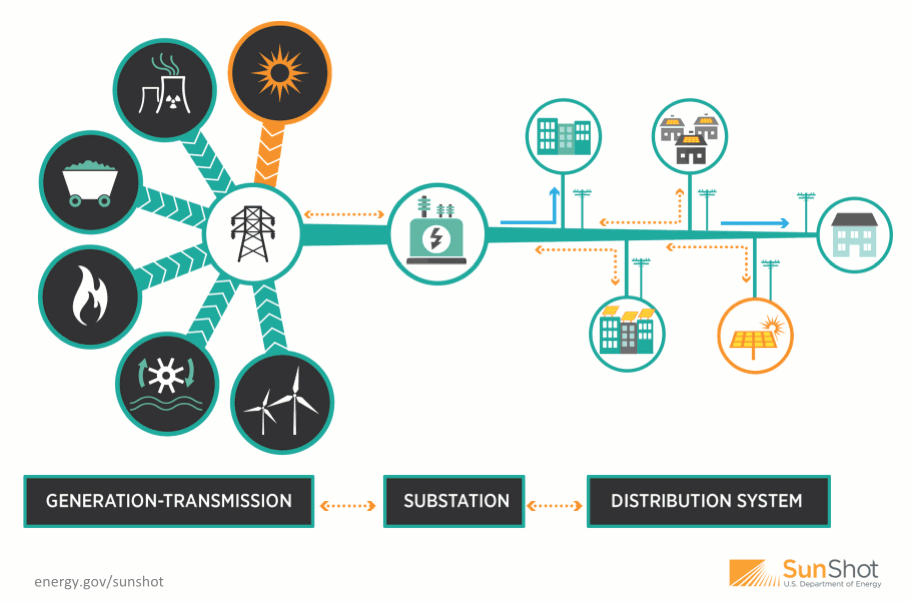
The U.S. Department of Energy has selected a Fraunhofer USA-led team to carry out a $3.5M, three-year research project to design, develop, and demonstrate an integrated system of solar photovoltaic (PV), energy storage, and facility load management at the utility distribution scale in Massachusetts. Fraunhofer USA, with National Grid, IPKeys, and Massachusetts Clean Energy Center (MassCEC), will match the award, contributing $3.5M towards the project.
Currently, one of the biggest challenges facing utilities is how to integrate large quantities of PV production with the electric grid without compromising power reliability and quality. The Fraunhofer USA-led project, called “SunDial,” will create a management system that optimally manages facility loads and energy storage charging and discharging to mitigate potential problems due to intermittency and large ramps in PV power generation.
SunDial will tightly integrate PV, energy storage, and aggregated facility load management to actively manage net system power flows to and from the feeder – regardless of whether these individual components are co-located at the same site, or distributed at different sites. Working together, these systems will address the two greatest issues currently inhibiting high-penetration of PV on the grid - the intermittency of PV generation and the mismatch between electric loads and electric generation.
The project team, led by Fraunhofer USA, will create an open-source framework that builds upon existing interoperability data models to facilitate integration among PV plant developers, load aggregators, independent system operators and utilities across a range of use cases and business models.
During this three-year project, Fraunhofer USA and partners will design, develop, and deploy a fully functional and integrated photovoltaic (PV), energy storage, and a facility load management system at the utility distribution scale. The demonstration will take place in Massachusetts and last at least one year.

This project is currently funded by the US Department of Energy’s Solar Energy Technologies Office (SETO) [originally known as the SunShot Initiative] as part of a larger DOE investment aimed at developing technology solutions that reduce the “soft” costs of residential solar PV systems.
SHINES Principal Investigator & Head, Grid Integration
Fraunhofer USA CMI
15 Saint Mary's Street
Brookline, MA 02446, USA
Phone +1 (617) 714-6513
SHINES Principal Investigator & Head, Building Energy Systems
Fraunhofer USA CMI
15 Saint Mary's Street
Brookline, MA 02446, USA
Phone +1 (617) 353-1895